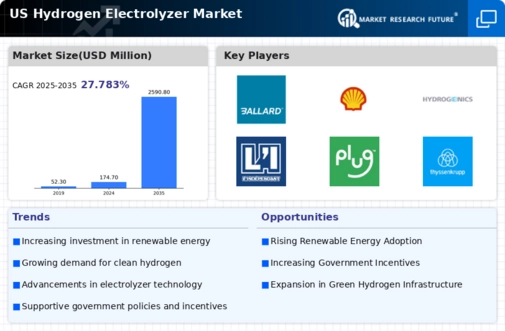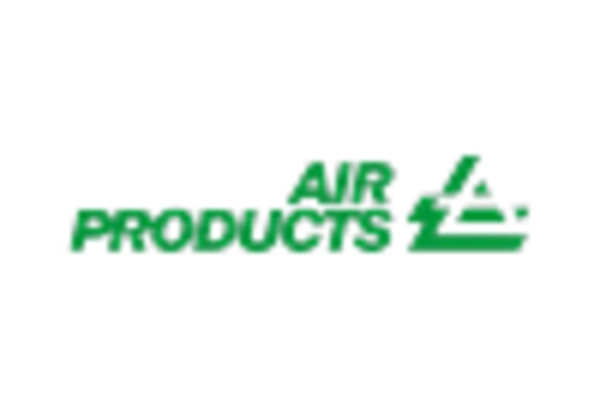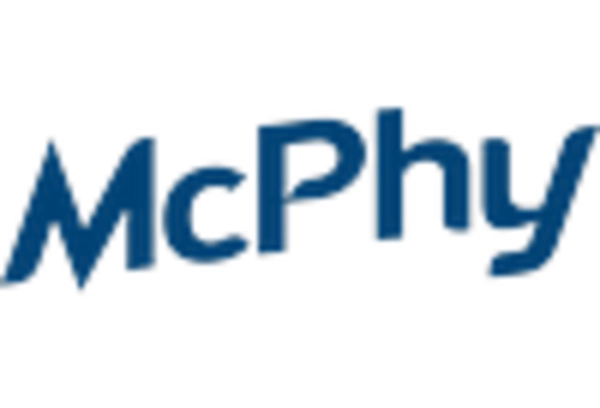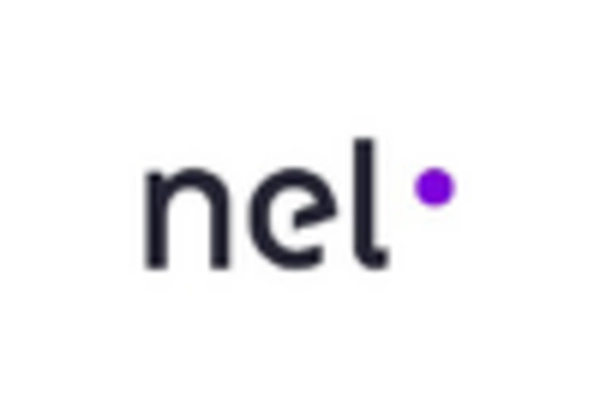Rising Demand for Clean Energy Solutions
The hydrogen electrolyzer market is experiencing a surge in demand driven by the increasing need for clean energy solutions. As industries and consumers alike seek to reduce their carbon footprints, hydrogen emerges as a viable alternative to fossil fuels. The U.S. government has set ambitious targets to cut greenhouse gas emissions by 50-52% by 2030, which is likely to bolster the hydrogen electrolyzer market. Furthermore, the market is projected to reach approximately $10 billion by 2027, indicating a robust growth trajectory. This demand is not only limited to transportation but extends to sectors such as manufacturing and power generation, where hydrogen can play a pivotal role in decarbonization efforts. The hydrogen electrolyzer market is positioned to benefit from this growing trend towards sustainability.
Growing Industrial Applications of Hydrogen
The hydrogen electrolyzer market is witnessing growth due to the expanding industrial applications of hydrogen. Industries such as steel manufacturing, chemical production, and refining are increasingly adopting hydrogen as a cleaner alternative to traditional processes. For instance, the steel industry is exploring hydrogen-based direct reduction methods, which could reduce carbon emissions by up to 90%. This shift is likely to drive demand for hydrogen electrolyzers, as they are essential for producing green hydrogen. The market is projected to grow at a CAGR of around 15% from 2025 to 2030, reflecting the increasing reliance on hydrogen in various industrial sectors. The hydrogen electrolyzer market is poised to capitalize on these emerging applications.
Supportive Regulatory Frameworks and Policies
Supportive regulatory frameworks and policies influence the hydrogen electrolyzer market by promoting the adoption of hydrogen technologies. The U.S. government has implemented various initiatives aimed at fostering the development of hydrogen as a clean energy source. For example, the Infrastructure Investment and Jobs Act allocates substantial funding for hydrogen projects, which is expected to stimulate market growth. Additionally, state-level policies are increasingly encouraging the use of hydrogen in transportation and energy storage. These regulatory measures not only provide financial incentives but also create a conducive environment for innovation and investment in the hydrogen electrolyzer market. As these policies evolve, they are likely to further enhance the market's growth prospects.
Technological Innovations in Electrolyzer Efficiency
Technological advancements in electrolyzer efficiency are significantly impacting the hydrogen electrolyzer market. Innovations such as proton exchange membrane (PEM) and alkaline electrolyzers are enhancing the production rates and reducing operational costs. Recent studies indicate that improvements in electrolyzer efficiency could lead to a reduction in the cost of hydrogen production by up to 30% by 2030. This is particularly relevant as the U.S. aims to achieve a hydrogen production cost of $2/kg by 2025, making it competitive with traditional fuels. As these technologies mature, they are likely to attract further investment and interest from various sectors, thereby propelling the hydrogen electrolyzer market forward. The continuous evolution of these technologies suggests a promising future for the market.
Increased Investment in Renewable Energy Infrastructure
The hydrogen electrolyzer market is benefiting from increased investment in renewable energy infrastructure across the U.S. As the country transitions towards a more sustainable energy landscape, significant funding is being allocated to develop renewable energy sources such as wind and solar. The U.S. Department of Energy has announced plans to invest over $100 million in hydrogen and fuel cell technologies, which is expected to enhance the hydrogen electrolyzer market. This influx of capital not only supports the development of electrolyzers but also facilitates the integration of hydrogen into the existing energy grid. The synergy between renewable energy and hydrogen production is likely to create a robust ecosystem that fosters growth in the hydrogen electrolyzer market.

















Leave a Comment